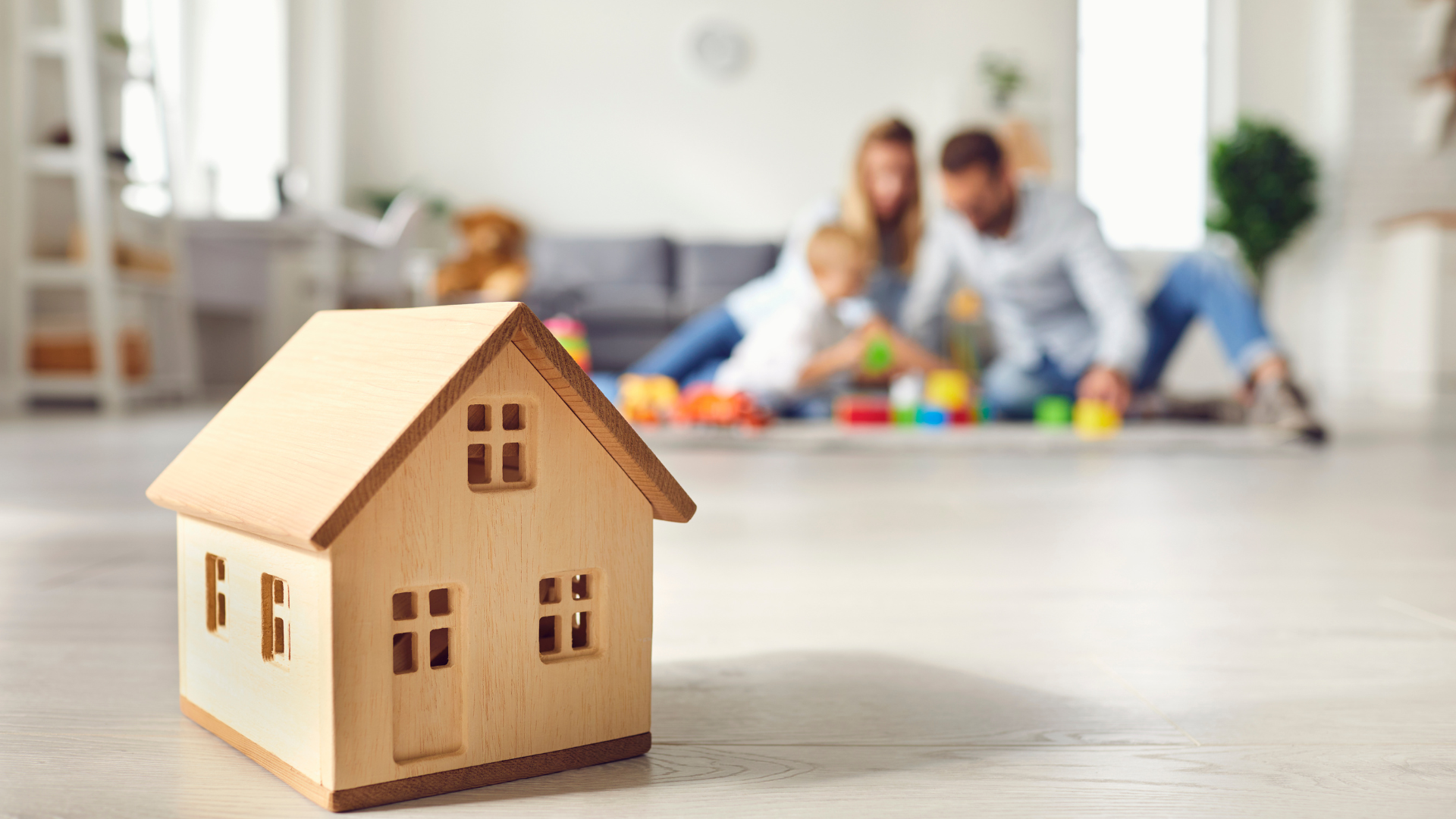Regular flooring care can help prolong the life of your flooring.
Preventing wear and tear, damage, and stains that can degrade the quality and appearance of your floors will help you save money in the long run.
In addition, clean and well-maintained floors can create a healthier living environment by removing allergens and pollutants from your home.
Benefits of regular care and maintenance:
- Add value to your home
- Save money with less replacements
- A more polished and well-cared-for look
- Reduced risk of tripping or falling due to damaged flooring
- Reduce your carbon footprint by minimizing replacements
Preventive Maintenance

Taking proactive steps in flooring care will help to keep your flooring in good condition for many years.
By following these tips, you can extend your floors lifespan, improve its appearance, and save money on possible costly repairs or replacements down the line.
5 Tips to Avoid Wear and Tear
Here are some ways to minimize wear and tear on your flooring and keep it looking great for years to come:
#1: Use protective furniture pads
Place furniture pads under the legs of chairs, tables, and other heavy furniture to prevent scratches and dents on hardwood and laminate flooring.
For tile and vinyl flooring, use rubber pads to prevent sliding and protect against wear and tear.
#2: Remove outdoor shoes
Encourage family members and guests to remove their shoes before entering the house, especially if they've been walking on rough surfaces or in dirty areas.
Shoes can track in dirt, sand, and other debris that can scratch and damage your flooring.
#3: Control humidity
Excess moisture can cause hardwood flooring to expand and contract, leading to cracks and warping.
Use a dehumidifier in humid areas and avoid exposing hardwood floors to water or high levels of moisture.
#4: Use floor mats
Place floor mats or runners in high-traffic areas, such as entryways and hallways, to trap dirt and debris and prevent scratches and wear and tear.
#5: Trim pet nails
Keep your pets' nails trimmed to prevent scratches and damage to your flooring.
5 Spill and Stain Protection Tips
Protecting your flooring against spills and stains is crucial to maintaining its appearance and longevity.
Here are some tips to help you prevent and address spills and stains:
#1: Act quickly
When a spill occurs, clean it up immediately to prevent it from setting in and causing damage.
Blot the spill with a clean, dry cloth or paper towel to absorb as much liquid as possible.
#2: Use the right cleaning products
Use a cleaning solution specifically designed for your type of flooring to remove spills and stains.
Avoid using harsh chemicals or abrasive cleaners that can damage the surface.
#3: Apply a protective coating
Consider applying a protective coating or sealant to your flooring to prevent spills and stains from seeping into the surface.
This is especially important for natural stone and porous materials like grout.
#4: Use area rugs
Place area rugs or mats in high-risk areas like the kitchen, dining room, and entryway to catch spills and stains before they reach the flooring.
Make sure the rugs have a non-slip backing to prevent slipping and sliding.
#5: Avoid certain materials
Avoid using or spilling certain materials like oil, bleach, and nail polish on your flooring, as they can cause permanent damage.
5 Furniture Placement Tips
Furniture placement can have a significant impact on the appearance and longevity of your flooring.
Here are some tips to help you place your furniture in a way that protects your flooring:
#1: Use furniture pads
Place furniture pads under the legs of chairs, tables, and other heavy furniture to prevent scratches and dents on hardwood and laminate flooring.
For tile and vinyl flooring, use rubber pads to prevent sliding and protect against wear and tear.
#2: Avoid dragging furniture
When moving furniture, avoid dragging it across the floor.
This can scratch and damage hardwood, laminate, and vinyl flooring. Instead, lift the furniture or use furniture sliders to move it.
#3: Leave space for air flow
Leave a small gap between your furniture and the wall to allow for air flow.
This can prevent moisture buildup and damage to your flooring.
#4: Consider furniture weight
Avoid placing heavy furniture on soft or delicate flooring, such as carpet or natural stone.
This can cause the flooring to compress or crack over time.
#5: Use rugs or mats
Place area rugs or mats under heavy furniture to distribute the weight and protect your flooring.
Make sure the rugs have a non-slip backing to prevent slipping and sliding.
Cleaning Techniques

The following cleaning techniques will help keep your floors looking great and extend their lifespan.
Remember to always read the manufacturer's instructions for flooring care and test any new cleaning product in a small, inconspicuous area before using it on the entire floor.
Choosing the right cleaning product
Use cleaning products specifically designed for your type of flooring to ensure safe and effective cleaning.
Avoid using harsh chemicals or abrasive cleaners that can damage the surface.
Effective cleaning tools
Use appropriate cleaning tools, such as microfiber mops, soft-bristled brushes, or a vacuum cleaner with a hard floor setting.
Additionally, avoid using tools that can scratch or damage your flooring, such as a stiff-bristled broom or a beater bar on your vacuum cleaner.
Cleaning frequency
Regular cleaning is important for maintaining the appearance and cleanliness of your floors.
The frequency of cleaning will depend on the type of flooring and the amount of foot traffic it receives.
For example, high-traffic areas like entryways and kitchens may require daily cleaning, while low-traffic areas like bedrooms may only need to be cleaned once a week for proper flooring care.
Special Care for Specific Floors

Now, let's look at cleaning methods for specific types of flooring.
Remember to always read the manufacturer's instructions and test any new cleaning product in a small, inconspicuous area before using it on the entire floor.
Hardwood flooring
Sweep or vacuum regularly to remove dust and dirt.
Avoid using water or wet cleaning methods on hardwood floors as it can cause damage.
Instead, use a dry or damp mop and a cleaning solution specifically designed for hardwood floors.
Avoid using wax, oil soap, or abrasive cleaners, as they can leave residue and damage the finish.
Laminate flooring
Sweep or vacuum regularly to remove dust and dirt.
Use a damp mop or cleaning pad with a cleaning solution specifically designed for laminate flooring.
Avoid using too much water, as excess moisture can damage the floor.
Use a soft-bristled broom or a vacuum cleaner with a hard floor setting to remove dust and debris from laminate floors.
Tile flooring
Sweep or vacuum regularly to remove dust and dirt.
Use a damp mop with a mild detergent or a cleaning solution specifically designed for tile floors.
Avoid using abrasive cleaners or tools that can scratch the tiles or damage the grout.
Use a soft-bristled broom or a vacuum cleaner with a hard floor setting to remove dust and debris from tile floors.
Vinyl flooring
Sweep or vacuum regularly to remove dust and dirt.
Use a damp mop or cleaning pad with a cleaning solution specifically designed for vinyl flooring.
Avoid using abrasive cleaners or tools that can damage the surface.
Carpet flooring
Vacuum carpeted floors regularly to remove dust, dirt, and pet hair.
Treat spills and stains promptly with a carpet cleaner or spot treatment solution.
In addition, schedule professional carpet cleaning at least once a year to remove deep-seated dirt and maintain the carpet's appearance.
Above all, avoid using excessive water or harsh chemicals, as it can damage the carpet fibers and backing.
Repairing Damages
Common damages to floors
Scratches, dents, stains, and cracks are common damages that can occur to different types of flooring.
Quick fixes and DIY solutions
- For small scratches and dents, use a wax crayon or a wood filler to fill in the damaged area.
- For stains, use a cleaning solution specifically designed for your type of flooring.
- For cracks or chips, use a filler or patching compound designed for your type of flooring.
When to hire a professional
For extensive damages beyond routine flooring care, it is best to hire a professional.
A professional flooring contractor can assess the damage and provide the best course of action.
In some cases, the damaged area may need to be replaced, which should only be done by a professional.
Conclusion
Regular maintenance is key to ensuring the longevity and appearance of your flooring.
By following proper cleaning techniques, special care tips, and promptly repairing damages, you can keep your floors looking great and extend their lifespan.
Here are some final tips and reminders for maintaining long-lasting floors:
- Above all, always read the manufacturer's instructions for cleaning and maintenance.
- Test any new cleaning or repair product in a small, inconspicuous area before using it on the entire floor.
- Avoid using harsh chemicals or abrasive cleaners on your floors.
- Use appropriate cleaning tools and methods for your type of flooring.
- Lastly, protect your floors from spills, stains, and wear and tear by using furniture pads, area rugs, and floor mats.
Incorporating these tips into your regular maintenance routine will help you enjoy beautiful and long-lasting floors for years to come.

